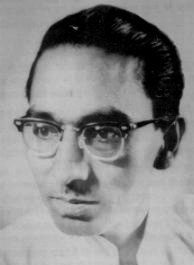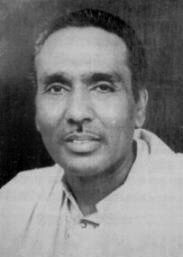First published on SAWF on October 2, 2000

Rajan Parrikar & Asha Bhosle (California, 1995)
Photo: Rana Bose
Namashkar.
Laxmanprasad Jaipurwale (1915–1977) remains largely unknown today, though he was a musician of rare brilliance — a vocalist and composer of extraordinary calibre, and a representative of the distinctive “Kunwar Shyam” tradition. This lyrical, layakari-rich gayaki was pioneered by the saint-musician-composer Goswami Lalji Maharaj, also known as Kunwar Shyam.
A recluse who performed solely within the Radha-Govind temple in Delhi, Kunwar Shyam (died c. 1911) left behind a treasury of sublime compositions. We have previously encountered his exceptional artistry in the renditions of Chhaya Malhar by Ramashreya Jha “Ramrang” and Bhimsen Joshi, featured in A Tale of Two Malhars. This feature revisits his legacy, along with that of his distinguished successor, Laxmanprasad.
Recordings of Laxmanprasad are scarce today. He led a life unperturbed by the trappings of financial acumen or self-promotion, qualities that might have assured him wider recognition in today’s world. His eldest son, Govindprasad Jaipurwale (1944–1988), also a gifted vocalist, was tragically lost too soon. Together, they imparted taleem to a multitude of professional musicians, including Rajdulari Khan (second wife of Ali Akbar Khan), Sudha Malhotra, Kavita Krishnamurthy, Ronu Majumdar, Meenu Purshottam, Aarti Mukherjee, Manhar, Ajit Kadkade, Chandrasekhar Gadgil, and several other capable yet lesser-known artists.

Laxmanprasad Jaipurwale
Laxmanprasad’s only surviving son, Girdharprasad, has taken on the formidable task of preserving his father’s musical legacy. Specializing in the tabla and equally adept in the melodic arts, Girdharprasad has, against significant odds, published two volumes of Sangeet Gyan Prakash, compiling the notated compositions of Laxmanprasad Jaipurwale and Kunwar Shyam.
Girdharprasad recently shared with me a collection of his father’s recordings — most unpublished, alongside a few from an old Polydor LP. Additionally, a selection of Govindprasad’s performances provides further insight into the family’s artistic heritage.
Laxmanprasad’s artistry was accompanied by the finest of his time. His preferred tabla accompanists were Taranath Rao and Habibuddin Khan, while the harmonium was graced by the virtuosity of Manohar Chimote and Madan Prakash. The audio clips presented here open a window into the extraordinary talent of a man whose brilliance deserves far greater remembrance.
We kick off with a vilambit khayal in Raga Bhatiyar followed by a druta rendition, both compositions of Laxmanprasad himself.
Next, a Gunakree (Gunakali) cheez set to Roopaka tala, again LPJ’s own.
Raga Kafi, a Laxmanprasad composition.
Kunwar Shyam was a specialist in the varieties of Malhars. A couple of bandishes in the aprachalita Raga Suha Malhar, an amalgam of Suha and Soor Malhar (this rendition should be more appropriately called Sughrai Malhar), follow.

Govindprasad Jaipurwale
Moving along, a bandish in Pooriya Kalyan.
The Laxmanprasad segment concludes with an elegant Mishra Khamaj thumri which in the latter half morphs into a ragamala.
We now turn to Govindprasad who was particularly proficient in the lighter forms such as ghazal and thumri. Afficionados of Vividh Bharati will have memories of him from the 1970s.
Govindprasad begins with an invocation to Saraswati in Raga Hamsadhwani. The composer is his father.
Next, a ghazal.
The final item, a thumri: muraliwale Shyam.
